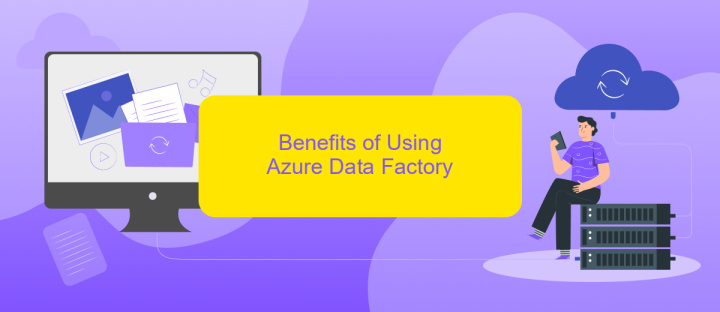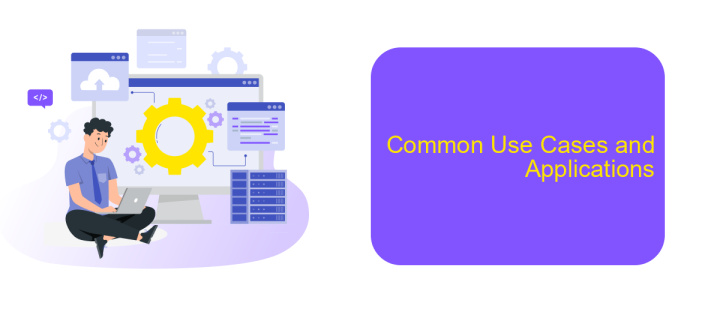What is the Use of Azure Data Factory
Azure Data Factory (ADF) is a powerful cloud-based data integration service by Microsoft that enables the creation, scheduling, and orchestration of data workflows. It allows organizations to efficiently move and transform data from various sources to desired destinations, facilitating data-driven decision-making. This article explores the key uses of Azure Data Factory, highlighting its capabilities and benefits for modern data management.
Introduction to Azure Data Factory
Azure Data Factory (ADF) is a cloud-based data integration service that allows you to create data-driven workflows for orchestrating and automating data movement and data transformation. It is a powerful tool for managing data pipelines and integrating various data sources, both on-premises and in the cloud.
- Data Integration: ADF supports seamless integration with numerous data sources, including SQL databases, NoSQL stores, and cloud storage solutions.
- Data Transformation: With ADF, you can transform raw data into meaningful insights using data flows and mapping data flows.
- Orchestration: ADF enables the scheduling and monitoring of data workflows, ensuring that data is processed and available when needed.
- Scalability: As a cloud-based service, ADF can scale to meet the demands of large data processing tasks.
For those looking to streamline their data integration processes, tools like ApiX-Drive can complement ADF by providing easy-to-use interfaces for setting up integrations and automating data flows between different services. This makes it easier to manage complex data workflows and ensures that data is consistently and accurately processed.
Key Features and Capabilities

Azure Data Factory is a powerful cloud-based data integration service that enables seamless data movement and transformation across various data stores. One of its key features is the ability to create and schedule data-driven workflows, allowing users to orchestrate and automate data pipelines with ease. With its intuitive drag-and-drop interface, users can design complex ETL processes without writing a single line of code, making it accessible for both technical and non-technical users.
Another significant capability of Azure Data Factory is its extensive connectivity to a wide range of data sources, including on-premises databases, cloud storage, and SaaS applications. This ensures that data can be ingested from virtually any source, transformed, and loaded into the desired destination. Additionally, for those looking to streamline their integration processes, services like ApiX-Drive can be utilized to set up and manage integrations effortlessly, further enhancing the efficiency and effectiveness of Azure Data Factory.
Benefits of Using Azure Data Factory

Azure Data Factory (ADF) is a powerful cloud-based data integration service that allows users to create, schedule, and orchestrate data workflows. It offers a variety of benefits that make it an essential tool for data engineers and analysts.
- Scalability: ADF can handle large volumes of data, making it suitable for both small and enterprise-level projects.
- Cost-Effective: With its pay-as-you-go pricing model, users only pay for what they use, making it a cost-effective solution.
- Integration: ADF supports seamless integration with various data sources and services, including the ability to use ApiX-Drive for custom integrations.
- Automation: ADF enables automated data pipelines, reducing the need for manual intervention and increasing efficiency.
- Security: It offers robust security features, ensuring that your data is protected at all stages of the workflow.
In summary, Azure Data Factory provides a scalable, cost-effective, and secure platform for data integration and automation. Its ability to integrate with various services, including ApiX-Drive, makes it a versatile tool for managing complex data workflows.
Common Use Cases and Applications

Azure Data Factory is a powerful cloud-based data integration service that enables seamless data movement and transformation. It is widely used for orchestrating data workflows and managing complex data pipelines. Businesses leverage Azure Data Factory to handle large volumes of data from various sources, ensuring efficient data processing and analytics.
One of the primary use cases of Azure Data Factory is in data migration projects. Organizations often need to move data from on-premises systems to the cloud, and Azure Data Factory simplifies this process by providing robust tools for data extraction, transformation, and loading (ETL). Additionally, it supports data integration from multiple sources, including SQL databases, Azure Blob Storage, and external APIs.
- Data migration from on-premises to cloud environments
- ETL processes for data warehousing
- Real-time data analytics and reporting
- Integration with external APIs and services like ApiX-Drive
- Automating data workflows and pipelines
Furthermore, Azure Data Factory integrates seamlessly with other Azure services, such as Azure Synapse Analytics and Azure Machine Learning, providing a comprehensive solution for data-driven decision-making. By leveraging tools like ApiX-Drive, businesses can automate and streamline their data integration processes, ensuring timely and accurate data flow across different systems.
Getting Started with Azure Data Factory
To start using Azure Data Factory, you first need to create an Azure account if you don't already have one. Once logged into the Azure portal, navigate to the Data Factory service and click on "Create Data Factory." Fill in the necessary details such as subscription, resource group, and region, then click "Review + Create." After the validation process, click "Create" to deploy your Data Factory instance. This setup allows you to manage and orchestrate data workflows seamlessly.
After setting up your Data Factory, you can begin creating data pipelines. Pipelines are a series of data activities that move and transform data from various sources to destinations. For easier integration with other services and APIs, consider using ApiX-Drive. This tool simplifies the process of connecting Azure Data Factory with numerous third-party applications, enabling automated data workflows without the need for extensive coding. With these steps, you are now ready to harness the full potential of Azure Data Factory for your data integration and transformation needs.


FAQ
What is Azure Data Factory used for?
How does Azure Data Factory handle data transformation?
Can Azure Data Factory integrate with other services?
Is it possible to automate data workflows in Azure Data Factory?
What are some alternatives for integrating and automating data workflows?
Time is the most valuable resource for business today. Almost half of it is wasted on routine tasks. Your employees are constantly forced to perform monotonous tasks that are difficult to classify as important and specialized. You can leave everything as it is by hiring additional employees, or you can automate most of the business processes using the ApiX-Drive online connector to get rid of unnecessary time and money expenses once and for all. The choice is yours!

